
What is it?
Dial back a few years and the thought of Hyundai embedding itself as an established competitor in a performance car segment would be laughable — but the success of the i30 N has proven that wrong.
The hatch has quickly earned a name as one of the best cars in the hot hatch segment, immediately bringing real weight to the ‘N’ badge. Following the i30 came the Veloster N for global markets (not UK bound, sadly) and now there’s a third model in the range — the i30 Fastback N.
Mechanically similar to the i30 N hatch, the Fastback N brings a real sporting edge to the four-door variant — but can it match the success of its hit sibling?
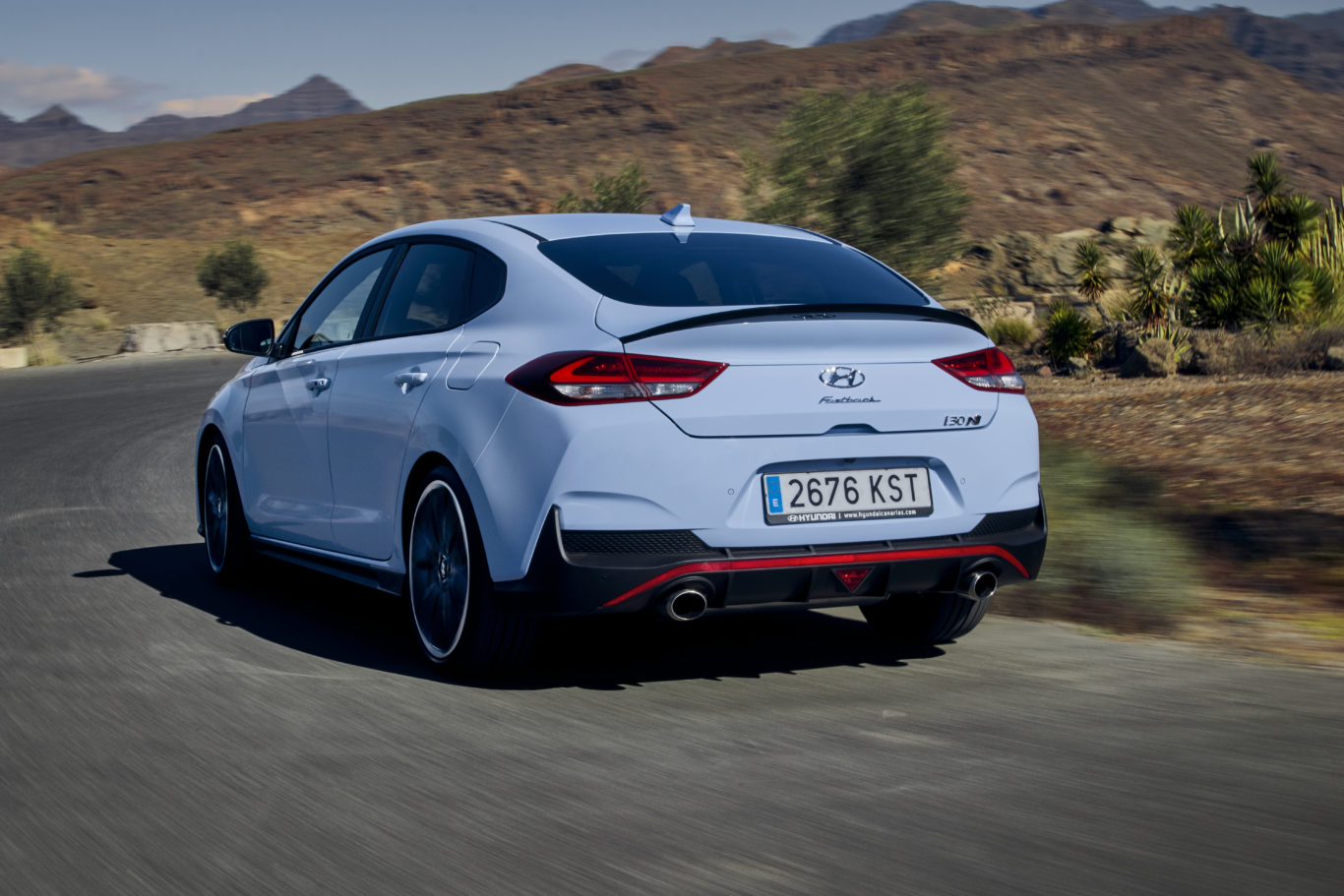
What’s new?
Keen to not spoil the formula, there aren’t many differences between the Fastback N and its hatch equivalent – body style aside.
That means it uses the same 2.0-litre, 271bhp powertrain along with the same clever technology to keep that power on the road — namely its electronic differential and torque vectoring systems.
There are some changes though, with a handful of visual tweaks made both inside and outside the car to give the Fastback a more distinctive look from the hatch. There’s also a switch to just one trim level in the UK, with the entry-level 247bhp model not coming to these shores.
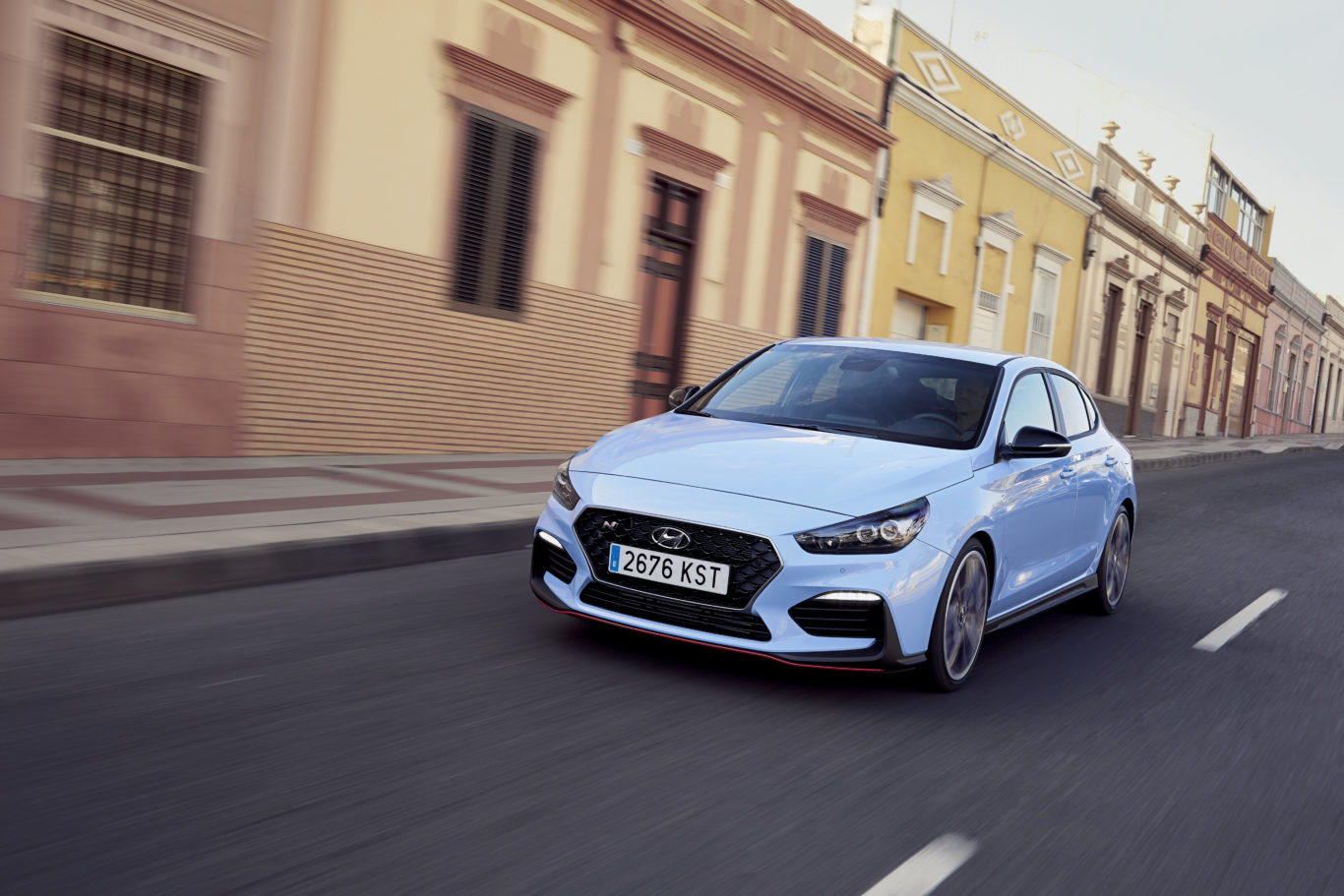
What’s under the bonnet?
As mentioned, the i30 Fastback N uses the same 2.0-litre turbocharged four-cylinder powertrain as its hatchback equivalent — delivering 271bhp and 353Nm of torque to the front wheels via a six-speed manual gearbox.
The result is a 0-60mph sprint of 5.9 seconds with a 155mph top speed possible. As for efficiency, Hyundai claims 34mpg on the combined cycle while emitting 178g/km of CO2.
Power delivery from the unit is impressive, with a wide torque band ensuring performance is always on hand. Its six-speed gearbox is crisp, and paired with the standard fit rev matching technology, will make you feel like a driving god on any given B road. There’s definitely a need for a throatier sound from the engine, though.
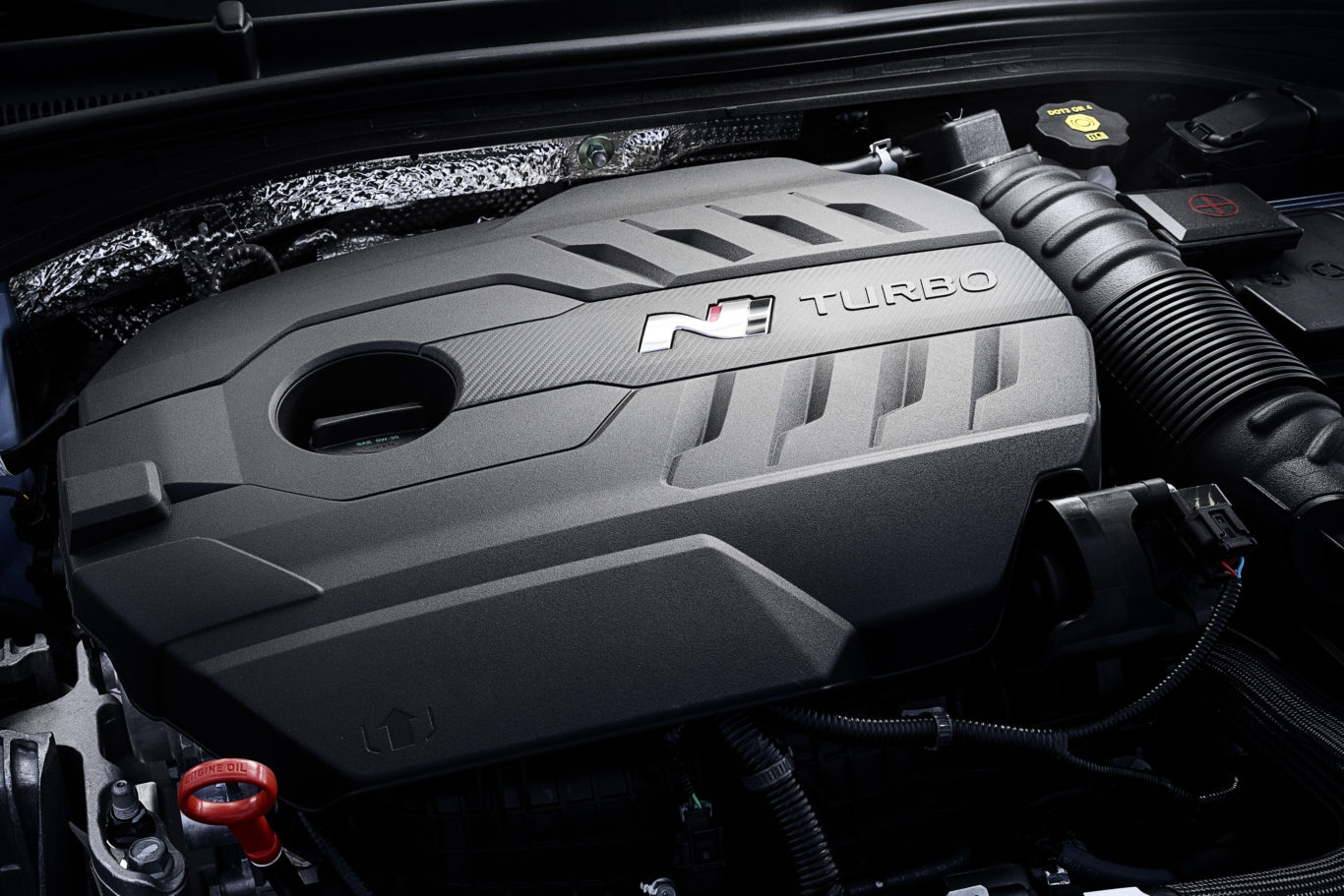
What’s it like to drive?
The i30 N hatch’s impressive driving dynamics have not been lost in translation over to the Fastback. Monumental amounts of grip remain on offer, and the turn-in response is amongst the sharpest across the whole new car market.
Despite its clinical approach on the road, there’s a playful hint to it too. Get it going on a track and the Fastback becomes prone to a bit of oversteer — but not to levels that can’t be controlled. It remains arguably one of, if not the, best-driving front-wheel-drive cars on sale today.
That said, its performance on twistier roads and race tracks does come at a cost in terms of comfort and refinement. Longer cruises can be a hassle as a result of its harsh ride and brash engine.
How does it look?
The Fastback N has received a racier treatment to distinguish itself as the performance model for the four-door body style — while also getting a handful of tweaks to differentiate it from the N hatch.
Up front, it benefits from an aggressively-styled bumper with a distinctive red strip, while the rear of the car sees the addition of a diffuser and ducktail spoiler. There’s also a model-specific Shadow Grey paint finish.
Looks are always subjective, but for us, the i30 N looks better in hatchback form. While the front of the car offers a tidy look, the rear third of the vehicle looks awkward when viewed from a side and gives it a knock-off Porsche Panamera look.
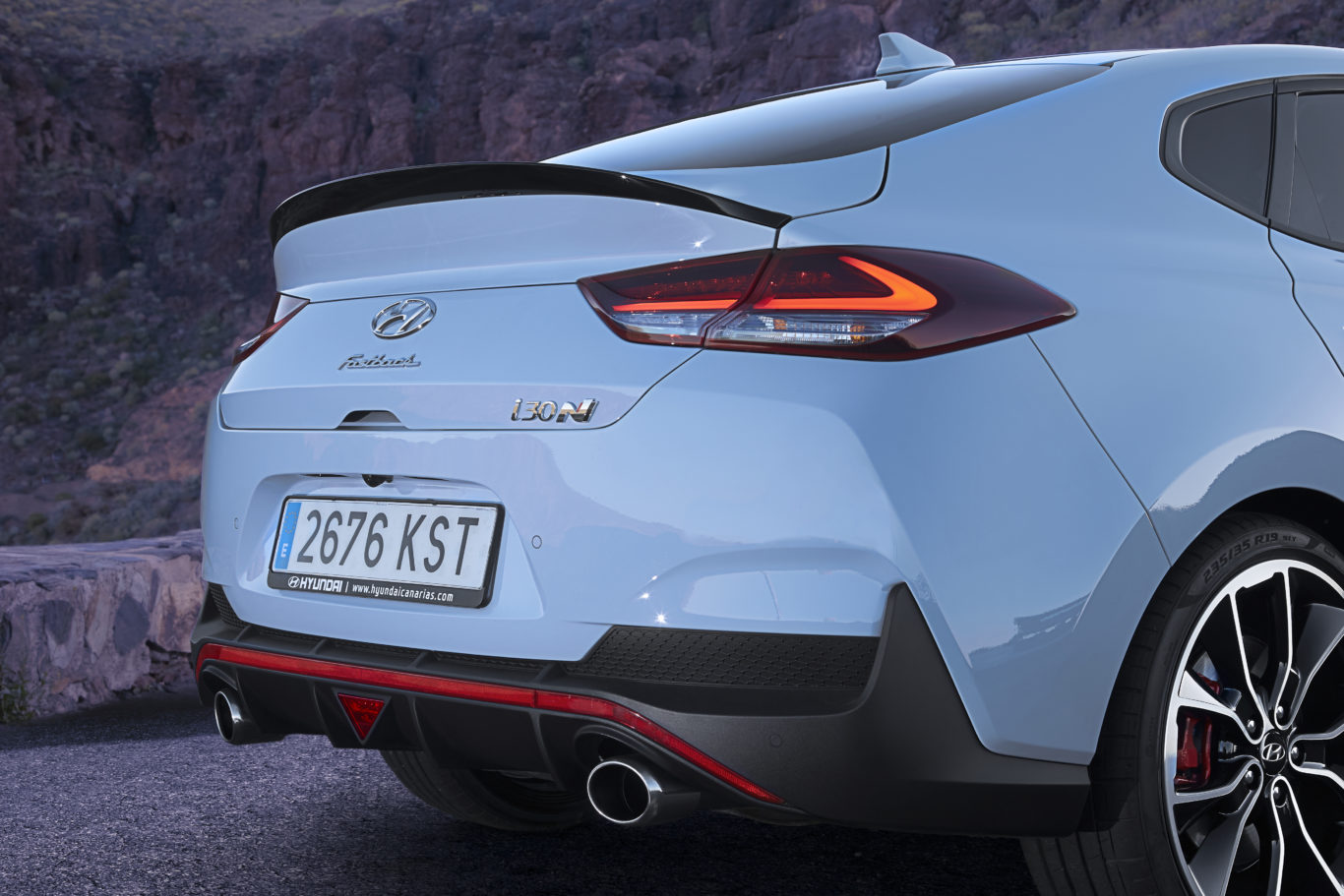
What’s it like inside?
Hop inside the Hyundai i30 Fastback N and you’ll find everything to be typical of the brand. The interior is well laid out and not particularly fussy, although there are hard plastics and not-so-premium-feeling materials throughout.
That said, there are some additions to continue the racy feel. Red stitching features on the suede seats, with matching red trim pieces featuring around the cabin. There’s also a sports steering wheel, and N badging dotted around.
Similarly, to hatch form, the Fastback N can seat five — although rear headroom is compromised as a result of its sleeker roofline. There are 436 litres of boot space on offer — down slightly from the regular Fastback’s 450-litre capacity, due to the addition of a chassis stiffening bar behind the seats, although more than the hatch’s 381 litres.
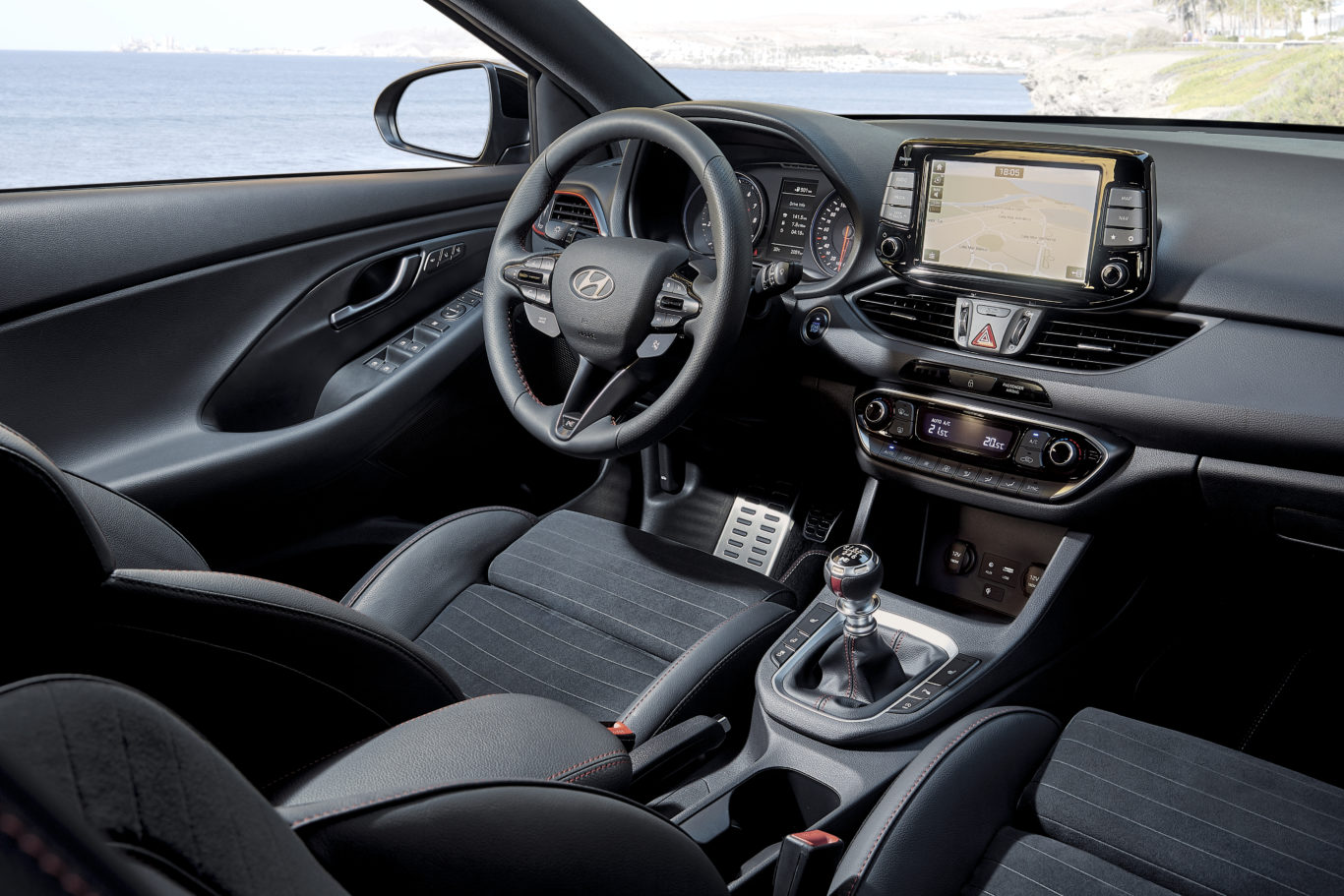
What’s the spec like?
Just one trim level will be offered for the Hyundai i30 Fastback N in the UK — a decision made as a result of the entry-level, less-powerful version of the hatch responsible for only a small fraction of sales on these shores.
The result is bags of standard equipment — with the sole paid-for option premium paint at £585. Thrown in to the package are LED head and taillights, cruise control, keyless entry with a start/stop button plus an eight-inch touchscreen infotainment system with support for both Android Auto and Apple CarPlay. That’s all on-top of the go-faster mechanical bits, too.
A small premium is commanded by the Fastback N, with its £29,995 starting price £500 more than the hatch in Performance trim.

Verdict
The Hyundai i30 Fastback N delivers an experience pretty much identical to that of the widely praised hatch. Its driving experience impresses, punching with the established performance nameplates such as Honda’s Civic Type R and Volkswagen Golf R.
But is the Fastback really worth opting for over the hatch? It makes sense from a practicality view with a larger boot — although it’s worth considering the reduced headroom — and if the four-door looks appeal more.
If driving experience is all that tops the list though, the hatch’s ever so slightly lower price point and like-for-like performance makes it far more tempting.

Enjoy the convenience of having The Sunday Post delivered as a digital ePaper straight to your smartphone, tablet or computer.
Subscribe for only £5.49 a month and enjoy all the benefits of the printed paper as a digital replica.
Subscribe